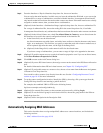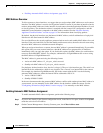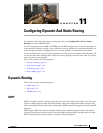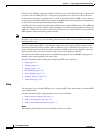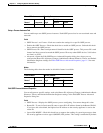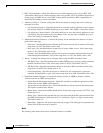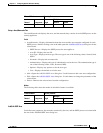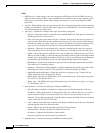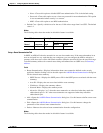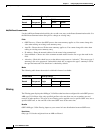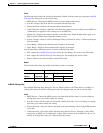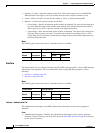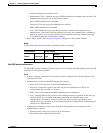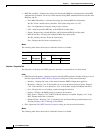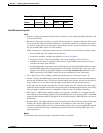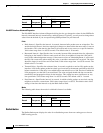
11-7
Cisco ASDM User Guide
OL-16647-01
Chapter 11 Configuring Dynamic And Static Routing
Dynamic Routing
–
None—Choose this option to disable OSPF area authentication. This is the default setting.
–
Password—Choose this option to use a clear text password for area authentication. This option
is not recommended where security is a concern.
–
MD5—Choose this option to use MD5 authentication.
• Default Cost—Specify a default cost for the area. Valid values range from 0 to 65535. The default
value is 1.
Modes
The following table shows the modes in which this feature is available:
Setup > Route Summarization Tab
In OSPF, an ABR will advertise networks in one area into another area. If the network numbers in an
area are assigned in a way such that they are contiguous, you can configure the ABR to advertise a
summary route that covers all the individual networks within the area that fall into the specified range.
To define summary address for external routes being redistributed into an OSPF area, see Summary
Address.
Fields
• Route Summarization—Displays information about route summaries defined on the security
appliance. Double-clicking a row in the table opens the Add/Edit Route Summarization dialog box
for the selected route summary.
–
OSPF Process—Displays the OSPF process ID for the OSPF process associated with the route
summary.
–
Area ID—Displays the area associated with the route summary.
–
IP Address—Displays the summary address.
–
Network Mask—Displays the summary mask.
–
Advertise—Displays “yes” when the route summaries are advertised when they match the
address/mask pair or “no” when route summaries are suppressed when they match the
address/mask pair.
• Add—Opens the Add/Edit Route Summarization dialog box. Use this button to define a new route
summarization.
• Edit—Opens the Add/Edit Route Summarization dialog box. Use this button to change the
parameters of the selected route summarization.
• Delete—Removes the selected route summarization from the configuration.
Modes
The following table shows the modes in which this feature is available:
Firewall Mode Security Context
Routed Transparent Single
Multiple
Context System
• — • ——



